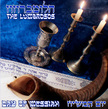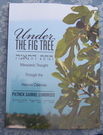“As long as I am in the world, I am the light of the world."
Adonai said to Moses, "You shall command the people of Israel that they bring to you pure beaten olive oil for the light, that a lamp may regularly be set up to burn. …. It shall be a statute forever to be observed throughout their generations by the people of Israel (Exodus 27:20-21). This lamp was a seven branch candelabrum called: the Menorah. This Menorah was to be perpetually lit in the first chamber of the Tabernacle usually called the holy place. In the letter to the Hebrews, this chamber was also called the ‘first’ (In Hebrews 8:13, the word ‘covenant’ was added in the text by KJV editors thus changing the context of Hebrews 9; that is why it is italicized in KJV Bibles) in front of the ‘second’, the Ark’s chamber (Hebrews 9:7) which represented the very presence of God.
When the Temple was built, this lamp was again placed in the ‘first’, right in front of the ‘second’. The Aaronic priesthood alone had the charge to care for it, to make sure it was perpetually lit, but all of the people had the charge to provide the oil; in this way, all of Israel was represented before God and had a part in being the 'light of the world' in Jerusalem. Now, without a temple the command cannot be performed, but in the days of the Third Temple the practice will again resume since it is a ‘forever’ commandment given to Israel (Exodus 27:21).
In the mean time, the Menorah is charged with messianic symbolism. Several prophets and servants of God were privy to enter the Father’s throne room. The first one we know of is Moses who was asked to reproduce what he saw and therefore to put this seven-branch candelabrum in the room in front of the Ark (Exodus 25:40). The last one we know of is John who wrote what he saw in the following words, And between the throne and the four living creatures … I saw a Lamb standing, as though it had been slain, with seven horns and with seven eyes, which are the seven spirits of God … (Revelations 5:6).
Yeshua well proclaimed ‘As long as I am in the world, I am the light of the world." (John 9:5) Yeshua is now with the Father, and He also told to His disciples, "You are the light of the world (Matthew 5:14).
We are on a mission. We who proclaim the Name of the Messiah, the Almighty’s Agent of redemption, have a role to perform, a duty to be the Menorah or the ‘Light of the world’. When He was on earth, the Light of Messiah shone for all to see. He did not hold back no matter how dangerous it was. Now the staff (the baton) is passed on to us and we must also perpetually let our light (the Light of Messiah in us) shine before others, so that they may see our 'mitzvot' (good works of obedience to Torah) and give glory to our Father who is in heaven (Matthew 5:16).
As the light of Messiah, we stand as His representative to the world. When the day of reckoning comes, may we not be found to have hid our light under a bushel (to have been a believer in secret for fear of man), but through obedience, to have set it on a candlestick for all to see (Matthew 5:15).
 RSS Feed
RSS Feed


